In den vergangenen Monaten sorgte kaum ein Bike für so viel Furore auf dem Downhill-Markt wie das brandneue Scott Gambler. Dieses kommt nicht nur mit einigen Updates, sondern steht für die anstehende Saison 2020 in völlig neuem Gewand und leichter denn je in den Startlöchern. Neben der Wahl zwischen Carbon- oder Alu-Rahmen, der Entscheidung zwischen 29 Zoll und 650b, bietet es Gambler-typisch sehr viele Möglichkeiten der persönlichen Anpassungen am Rahmen. Wir konnten die 15,7kg leichte Top-Version bereits testen und stellen euch im folgenden Artikel das getestete Scott Gambler Tuned 900 und seine Schwesternmodelle vor.
Das komplett neue, federleichte Scott Gambler 2020 kurz und knapp
Das Scott Gambler, schon seit weit mehr als einem Jahrzent bekannt aus dem Downhill-Worldcup und beinahe allen bekannten Freeride-Events, kommt für die anstehende Saison 2020 komplett modernisiert daher. Bei der Entwicklung des neuen Gamblers legte Scott extrem viel Wert auf einen superleichten Rahmen, der jedoch auch die nötige Stabilität für die härtesten Tracks der Welt aufweisen und vor allem eins sein soll – schnell. Doch stand nicht nur die pure Steifigkeit und das niedrigste Gewicht im Vordergrund, sondern auch das passende Niveau des lateralen Flex wurde nach eigenen Angaben bedacht. Um hier aus dem Vollen zu schöpfen, arbeitete Scott eng mit ihren Teamfahrern zusammen, so waren in den letzten Jahren bei Brendan Fairclough und Lucas Dean verschiedenste Prototypen im Downhill-Worldcup im Einsatz.
Der bewährte Eingelenker-Hinterbau wich bei der Reinkarnation des Bikes einem klassischen Viergelenker mit Horst-Link und somit hat das Scott Gambler 2020 ein komplett überarbeitetes Suspension Design verpasst bekommen. Optisch sind daher quasi keine Gemeinsamkeiten zu erkennen, denn gegenüber des Vorgängermodells sieht das neue Gambler absolut clean und weniger verschachtelt aus. Treu blieb Scott der enormen Vielzahl an Einstellmöglichkeiten, da unter anderem der Lenkwinkel, die Länge der Kettenstreben oder auch die Höhe des Tretlagers perfekt an die eigenen Bedürfnisse angepasst werden können. Hier mussten gegenüber der 2013 gelaunchten Vorgänger-Version zusätzlich einige Faktoren berücksichtigt werden, da das Gambler zwar in 29 Zoll ausgeliefert, doch die Wahl der Laufräder dem Rider selbst überlassen wird.
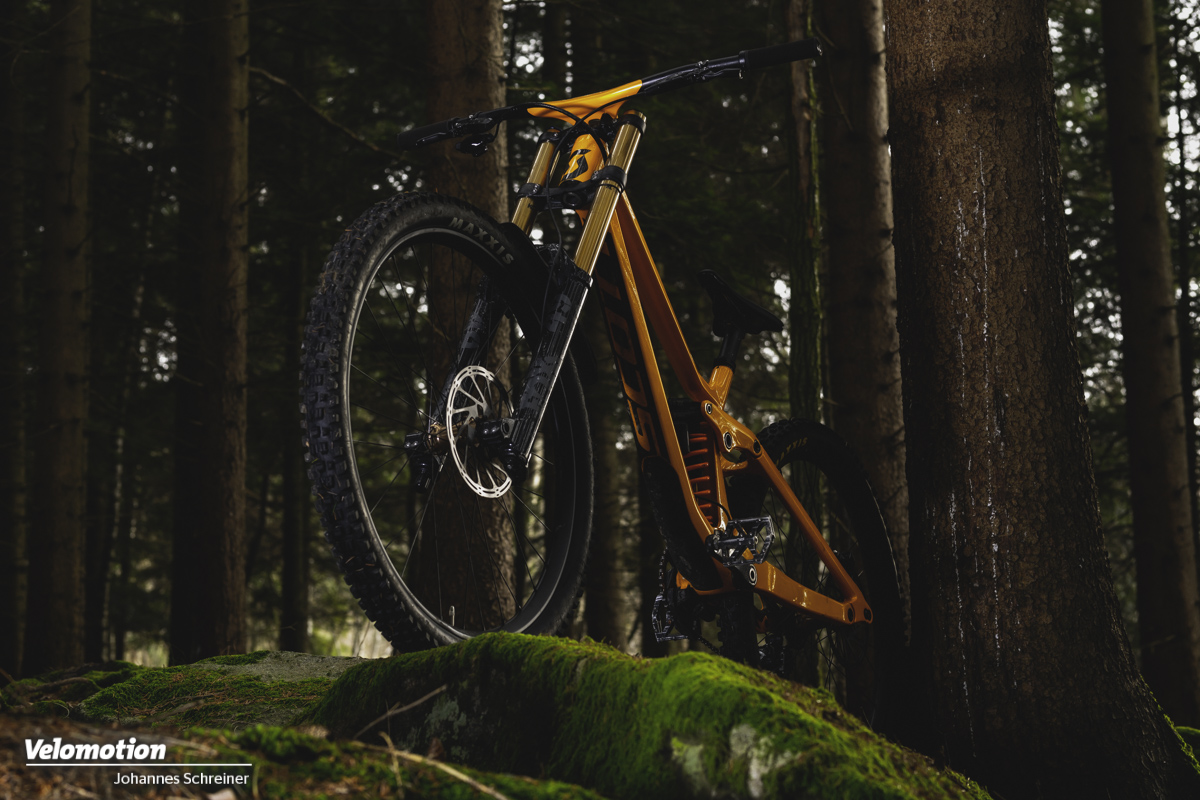
Jetzt in vier Varianten verfügbar
Bis vor Kurzem war ausschließlich das getestete Scott Gambler Tuned 900 verfügbar, welches mit Highend-Ausstattung, einem laut Hersteller 2650g leichten HMX-Carbonrahmen und vielen weiteren, smarten Detaillösungen daher kommt. Nun ist das Gambler in vier verschiedenen Versionen erhältlich, wobei von zwei Alu-Bikes, über ein Hybridbike mit Alu-Hinterbau und Kohlefaser-Hauptrahmen, bis zum Vollcarbon-Bike alles geboten ist, was das Bikerherz begehrt. Die Preise variieren hier zwischen 3699€ und 7999€. Scott spricht durch die verschiedenen Rahmenmaterialien und Ausstattungsvarianten ein breites Klientel, vom Vollblut-Racer bis zum gelegentlichen Bikeparkbesucher, an. Die Möglichkeiten bei der Wahl der Ausstattung reichen vom günstigeren Rock Shox/X-Fusion-Fahrwerk bis zur Top-Variante mit Fox Factory-Fahrwerk. Auch in Sachen Laufräder lassen die Hersteller, wie oben bereits kurz erwähnt, dem Endkunden alles offen, da auch der Aufbau mit 650b oder auch als Mullet-Bike, mit 29 Zoll vorne und 27,5 Zoll hinten, beim Gambler kein Problem darstellt. Alle Modelle werden jedoch mit 29 Zoll Laufrädern ausgeliefert. Zusätzlich zu den Komplettbikes bietet Scott das Gambler Tuned 900 auch als Frame-Kit inklusive Fox DHX2 und Syncros Steuersatz für 4199€ an.
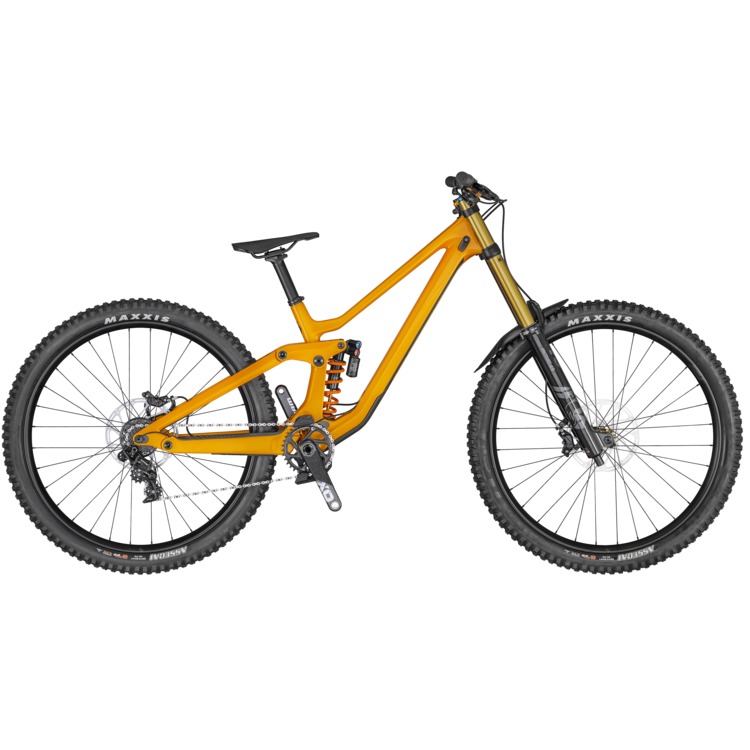
Rahmen: Gambler HMX Carbonrahmen
Dämpfer: Fox DHX2 200mm
Gabel: Fox 49 Factory Float 203mm
Schaltung: Sram XO1 DH
Bremse: Sram Code RSC
Laufradsatz: Syncros Revelstoke DH 1,5 TR
Gewicht: 15,79kg (nachgewogen)
Preis: 7.999 Euro
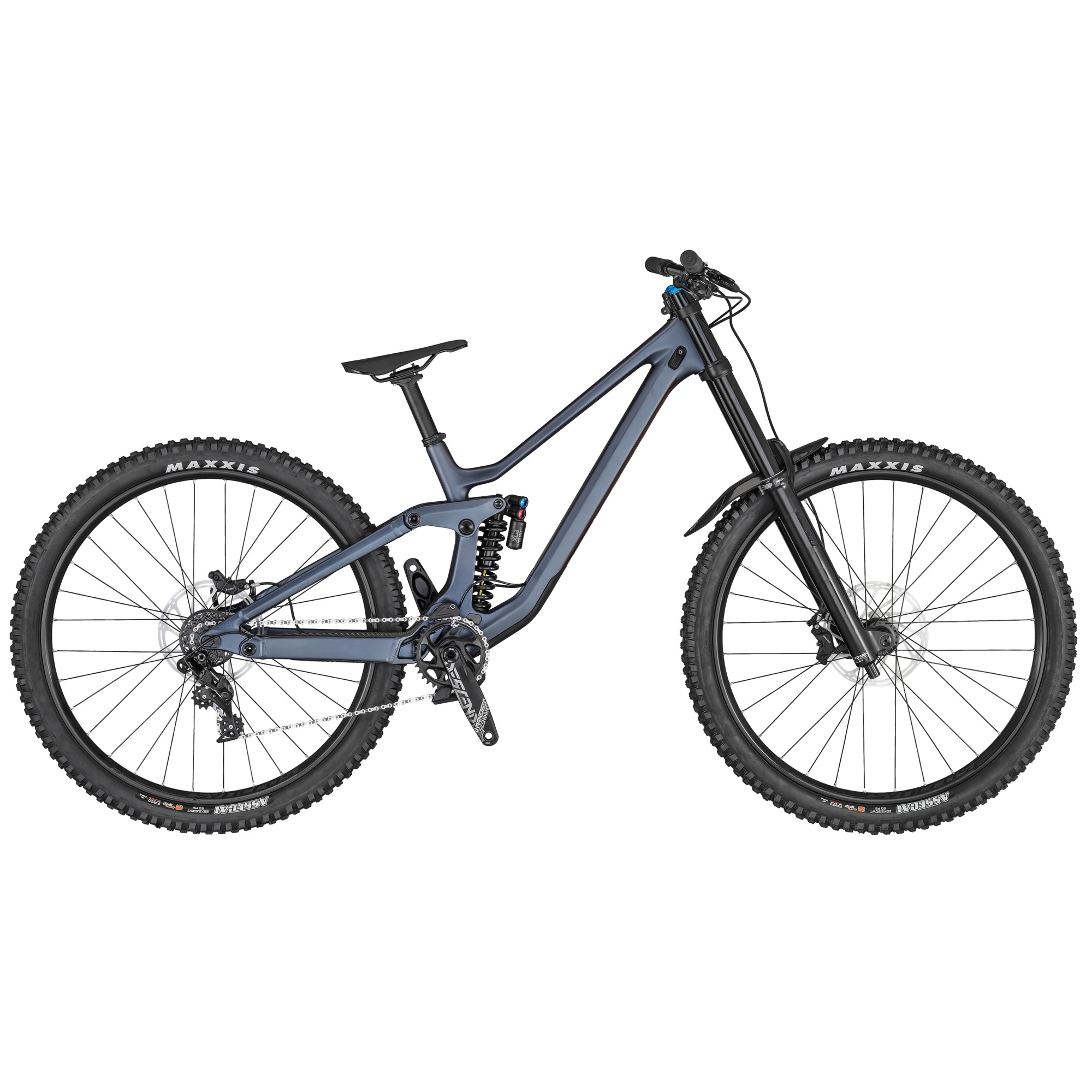
Rahmen: Gambler HMX Carbon/Alu-Rahmen
Dämpfer: Fox DHX2 200mm
Gabel: Fox 40 Performance Elite 203mm
Schaltung: Sram GX DH
Bremse: Sram Code R
Laufradsatz: Formula DHL-157/92
Gewicht: 16,7kg (Herstellerangabe)
Preis: 5.999 Euro
Neue Maßstäbe in Sachen Individualisierung
Die Einstellmöglichkeiten kurz zusammengefasst
- Wahlweise 27,5 Zoll oder 29 Zoll
- Anpassbare Länge der Kettenstreben von 435mm bis 450mm
- 4-Wege-Flip-Chip am unteren Dämpferauge für eine optimale Anpassung der Höhe des Tretlagers und Optimierung der Kinematik, je nach Laufradgröße
- Mitgelieferte Steuersatzschalen für einen anpassbaren Lenkwinkel von 62° bis 64°
Wie bei seinem Vorgänger gibt es auch am Scott Gambler 2020 zwei Möglichkeiten der Längenanpassung der Kettenstreben und somit auch der Gesamtlänge um +-15mm. Dies sorgt dafür, dass der Rider das Bike optimal an die Gegebenheiten des Tracks anpassen kann, also zusammengefasst gesagt: Lange Einstellung für mehr Laufruhe und kurz für mehr Agilität. Das wird jedoch nicht nur durch die Länge der Kettenstreben beeinflusst, sondern auch die Wahl der Laufradgröße spielt hier eine entscheidende Rolle. So kann das Scott Gambler beispielsweise mit 650b und langer Hinterbaueinstellung ebenso gefahren werden, wie mit 29 Zoll und kurzen Streben.
Neben der Länge der Kettenstreben beeinflusst auch der Flip-Chip im unteren Dämpferauge die Fahreigenschaften des Bikes erheblich. Dieser bietet dem Biker zwei verschiedene Höheneinstellungen des Tretlagers, mit dem es um 8,5mm oder um 24,2mm abgesenkt werden kann. Ebenfalls bedeutsam erscheinen uns auch die zwei Bohrungen im Flip-Chip, die über ein lineares oder ein progressives Verhalten entscheiden. Diese Geometrie- und Dämpferoptionen sollen dazu beitragen, den Massenschwerpunkt des Fahrers zwischen den Rädern ideal zu platzieren, sodass ein optimales Level aus Balance und Traktion gegeben ist. Zu guter Letzt kann auch der Lenkwinkel durch die mitgelieferten Steuersatzschalen optimal auf die Gegebenheiten der Strecke, des Bike-Setups und der persönlichen Vorlieben des Riders angepasst werden.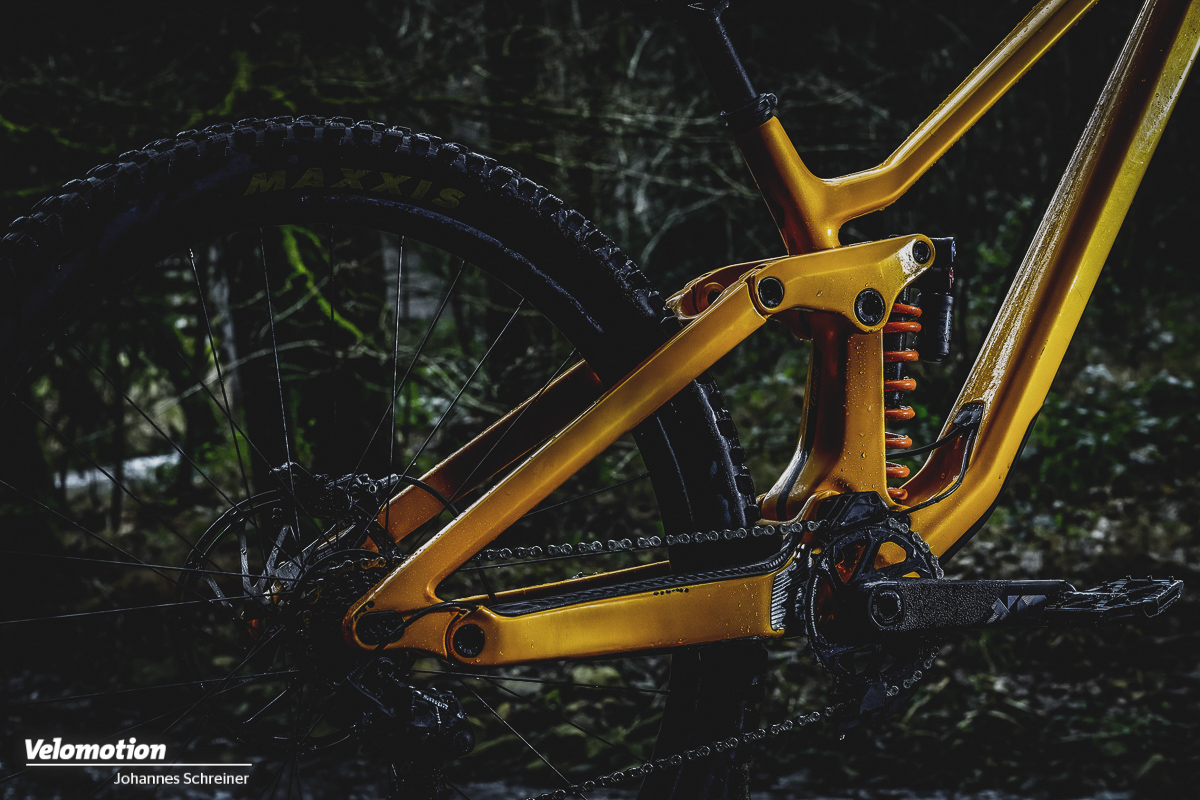
Geometrie des Scott Gambler 2020
Die Geometriedaten des Scott Gambler sind durch die enorme Anzahl an Einstellmöglichkeiten enorm umfangreich, da jegliche Anpassungen vielerlei Werte beeinflussen. Alle Größen verbindet jedoch vor allem eines – sie sind allesamt lang und flach, wie die meisten der aktuellen 29 Zoll Race-Downhillbikes. Der Lenkwinkel bewegt sich zwischen 62° und 64° und der Radstand variiert von 1207,6mm in Größe S, bis zu 1302,8mm in Größe XL. Anders als bei den früheren Gambler-Plattformen sind nun vier Rahmengrößen von S bis XL verfügbar, die Reach-Werte von 400,2mm bis 495,0mm aufweisen. Für kleinere Fahrer der Größen S und M wählte Scott den Sitzwinkel etwas steiler, damit diese den Sattel tiefer stellen können und trotzdem der gefürchtete Kontakt zwischen Reifen und Sattel vermieden werden kann.
| S/900 | S/700 | M/900 | M/700 | L/900 | L/700 | XL/900 | XL/700 | |
|---|---|---|---|---|---|---|---|---|
| Low BB Setting | High BB Setting | Low BB Setting | High BB Setting | Low BB Setting | High BB Setting | Low BB Setting | High BB Setting | |
| Lenkwinkel in ° | 62,9 | 63,2 | 62,9 | 63,2 | 62,9 | 63,2 | 62,9 | 63,2 |
| Steuerrohrlänge in mm | 110 | 110 | 110 | 110 | 110 | 110 | 110 | 110 |
| Oberrohrlänge horizontal in mm | 537,4 | 535,7 | 567,5 | 565,7 | 621,0 | 618,9 | 651,1 | 648,9 |
| Überstandshöhe in mm | 719,3 | 712,3 | 711,6 | 705,0 | 712,1 | 705,8 | 709,6 | 703,6 |
| Tretlagerabsenkung in mm | -24,2 | -8,5 | -24,2 | -8,5 | -24,2 | -8,5 | -24,2 | -8,5 |
| Tretlagerhöhe in mm | 346,4 | 342,6 | 346,0 | 342,6 | 345,4 | 342,6 | 346,2 | 342,6 |
| Radstand in mm | 1207,6 | 1212,8 | 1237,6 | 1242,8 | 1270,0 | 1272,8 | 1297,6 | 1302,8 |
| Sitzrohrlänge in mm | 405,0 | 405,0 | 405,0 | 405,0 | 405,0 | 405,0 | 405,0 | 405,0 |
| Sitzwinkel in ° | 66,8 | 67,2 | 66,8 | 67,2 | 63,8 | 64,2 | 63,8 | 64,2 |
| Kettenstrebenlänge in mm | 438,7 | 435,0 | 438,7 | 435,0 | 438,7 | 435,0 | 438,7 | 435,0 |
| Reach in mm | 400,2 | 405,0 | 430,3 | 435,0 | 460,4 | 465,0 | 490,5 | 495,0 |
| Stack in mm | 636,2 | 631,3 | 636,2 | 631,3 | 633,5 | 631,3 | 636,2 | 631,3 |
Details des Gambler Tuned 900
Das Scott Gambler Tuned kommt in einem knalligen Orange daher, bietet einige smarte Detaillösungen und reiht sich optisch klasse in die Produktpalette neben die neuen Ransom- und Genius-Modelle ein. Die am Gabelanschlag eingeführten Züge für Schaltung und Bremse verlaufen innenverlegt im Rahmen, kommen nahe des Dämpfers erst wieder zum Vorschein und sorgen so für ein aufgeräumtes Bike. Dort sind sie durch eine Klemme und einige Kabelbinder fixiert, die klappernden Leitungen vorbeugen sollen. Der eingelassene Rahmenschutz an der Unterseite des Unterrohrs und die Gummibeschichtung an der Kettenstrebe antriebsseitig sollen ebenfalls für ein leises Bike sorgen. Dies tun sie in der Praxis auch, jedoch könnten sie seitens des Herstellers etwas großzügiger gewählt werden, da der Rahmen im Test einige kleine Lackabplatzer davontrug. Was neben den klug verlegten Zügen jedoch ebenfalls gefällt, ist das Syncros Trail DH Schutzblech an der Front, welches Fahrer und Bike bei schlechten Bedingungen zuverlässig schützt.
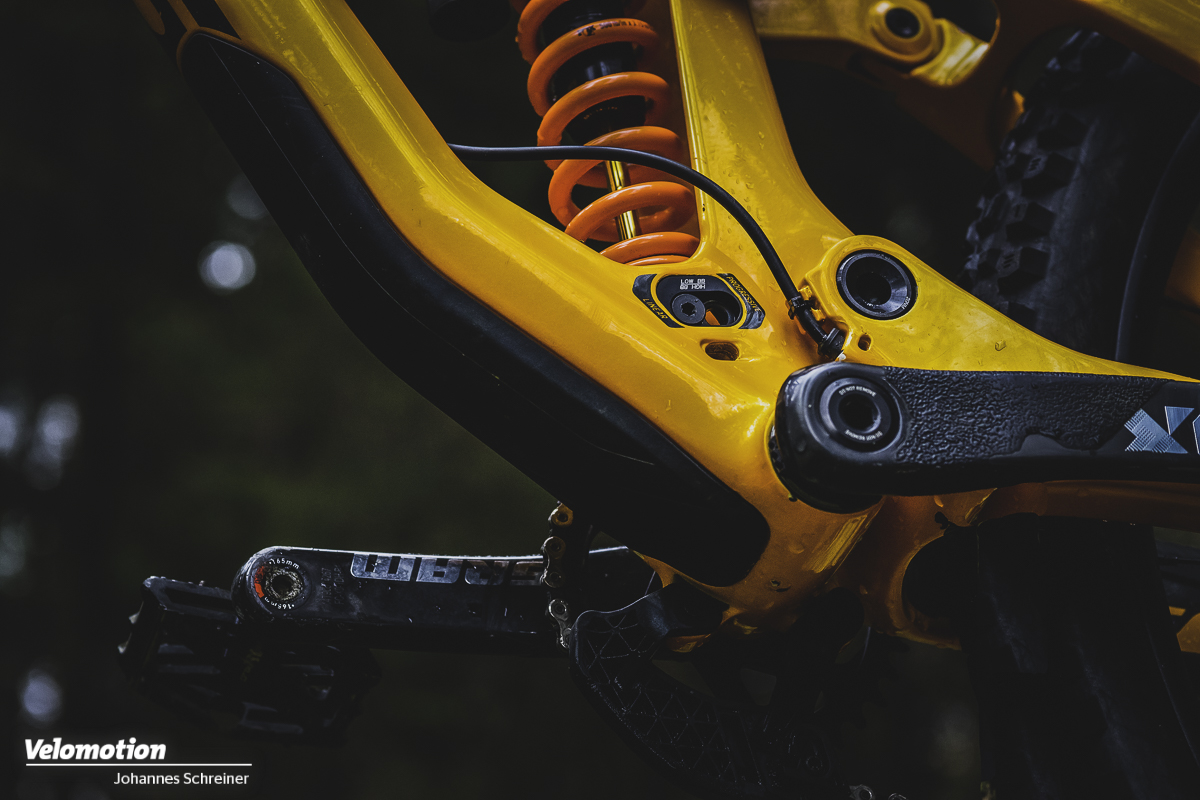
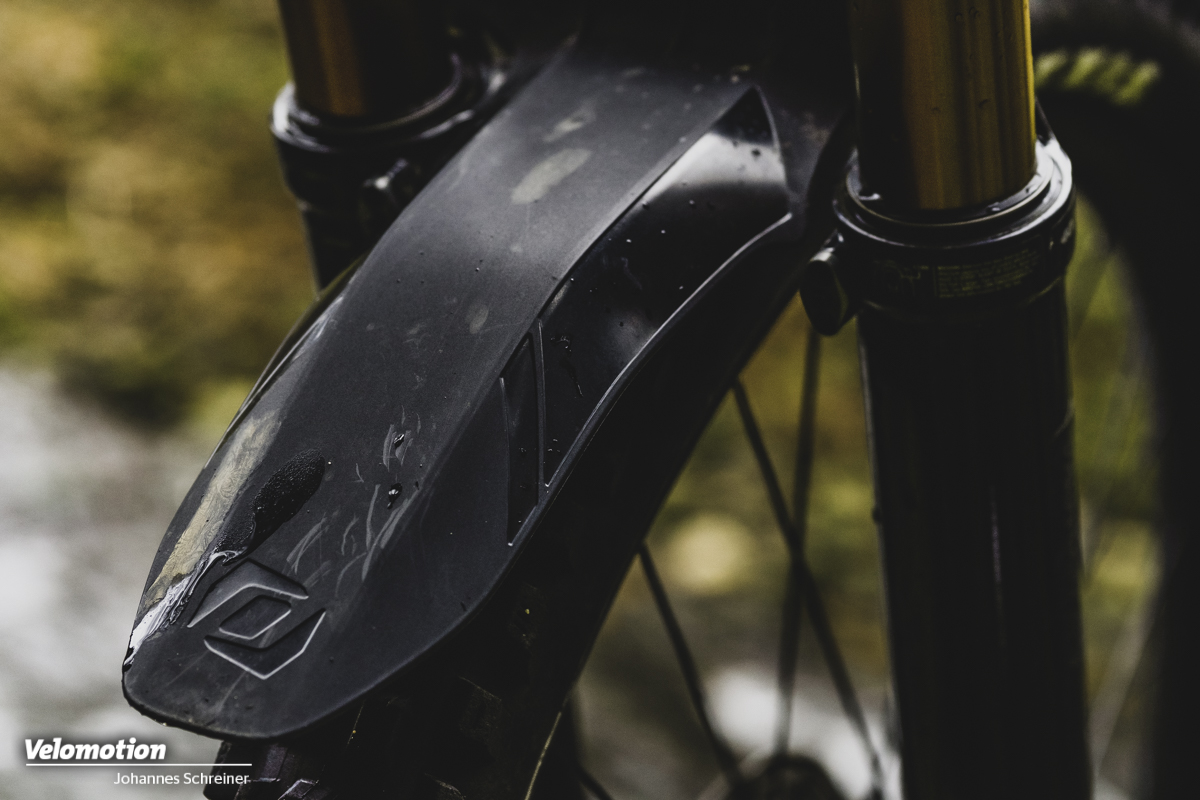
Die Ausstattung des Gambler Tuned 900
Das Scott Gambler Tuned 900 kostet knapp 8000€ und bringt daher natürlich nur die edelsten Komponenten mit. Beim Fahrwerk setzen die Schweizer auf eine Fox 49 und einen Fox DHX2, jeweils in der Factory-Ausführung mit 203mm/200mm Federweg. Am Scott Gambler Tuned 900 fungiert der leichte Sram XO1-DH-Antrieb, der mit sieben Gängen und einem 34T Kettenblatt an der XO1 DH-Kurbel ausreichend Bandbreite bietet. Ebenfalls aus dem Hause Sram kommt die bissige Guide RSC mit 200mm großen Bremsscheiben.
Bis auf die Maxxis Assegai Reifen in 29×2,50 kommen alle weiteren Komponenten von der Scott Eigenmarke Syncros, wie die Syncros Revelstoke DH 1.5 Alu-Laufräder. Vor allem die Syncros Hixon iC DH Carbon Lenker-Vorbau-Kombi mit 15mm Rise, 8° Backsweep und 800mm Breite sticht hier hervor und an diesem sind die Syncros Pro DH dual Lock-On Griffe montiert. Ebenfalls von Syncros kommt der Steuersatz, ebenso wie der Comox Sattel, der durch seine spezielle Form für den Einsatz an 29 Zoll Downhillbikes entwickelt wurde.
| Rahmen | Gambler HMX Carbonrahmen |
| Federgabel | FOX 40 Factory Float 203mm |
| Dämpfer | FOX DHX2 200mm |
| Laufräder | Syncros Revelstoke DH 1,5 TR |
| Reifen VR | Maxxis Assegai 29x2.5" |
| Reifen HR | Maxxis Assegai 29x2.5" |
| Schaltwerk | SRAM XO1 DH Short cage/7-Speed |
| Schalthebel | SRAM XO1 DH Trigger Shifter |
| Kurbel | SRAM X01 DH DUB Carbon 34T Alloy Chainring DM/165mm |
| Umwerfer | |
| Bremse | SRAM Code RSC |
| Bremsscheiben | SRAM Centerline (200mm) |
| Sattelstütze | Syncros DH1.5/31.6mm/Alloy7050 |
| Sattel | Syncros Comox 1.5 Titanium Rails |
| Vorbau | |
| Lenker | Syncros Hixon iC DH Carbon 15mm Rise/8°/800mm |
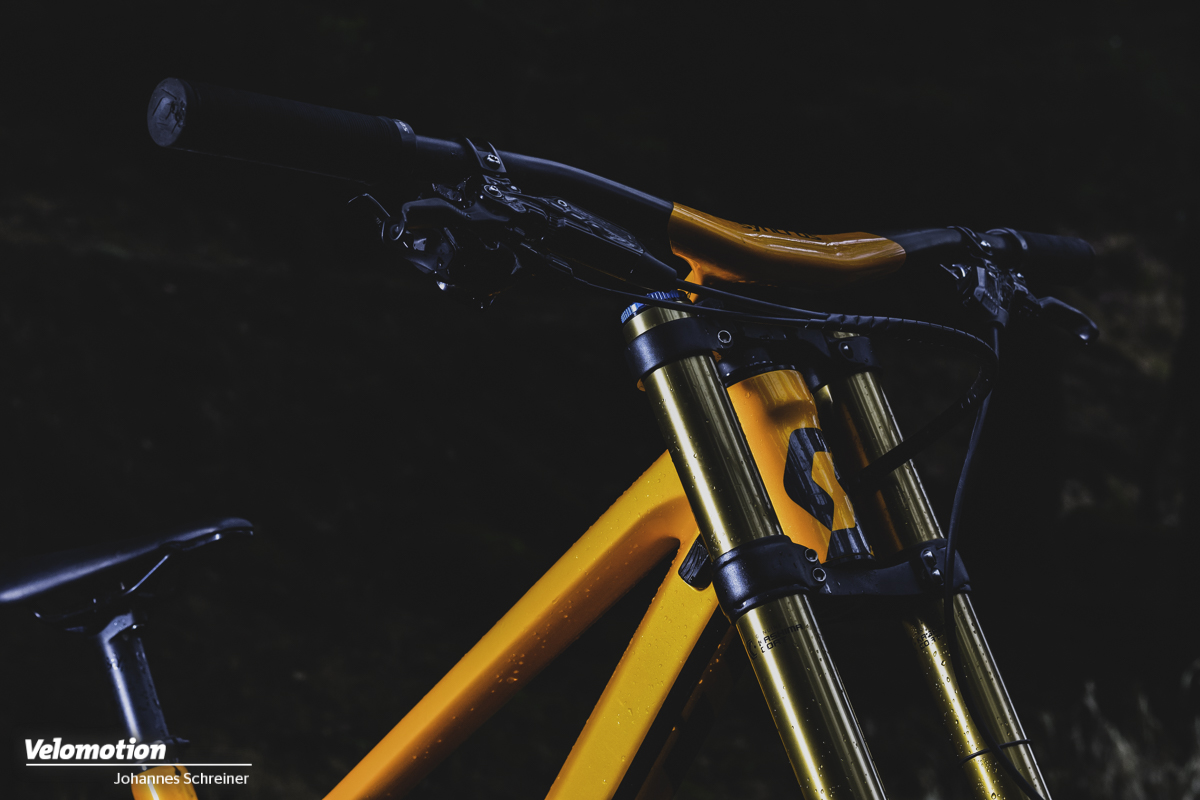
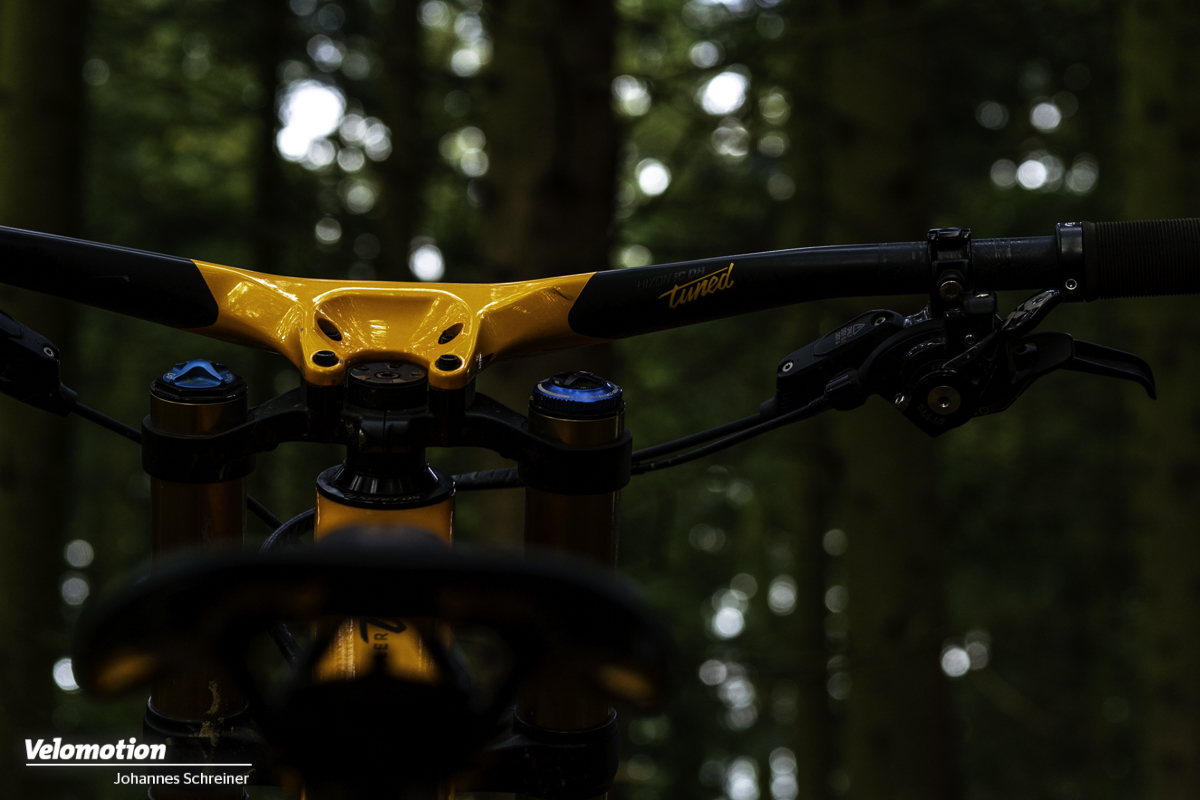
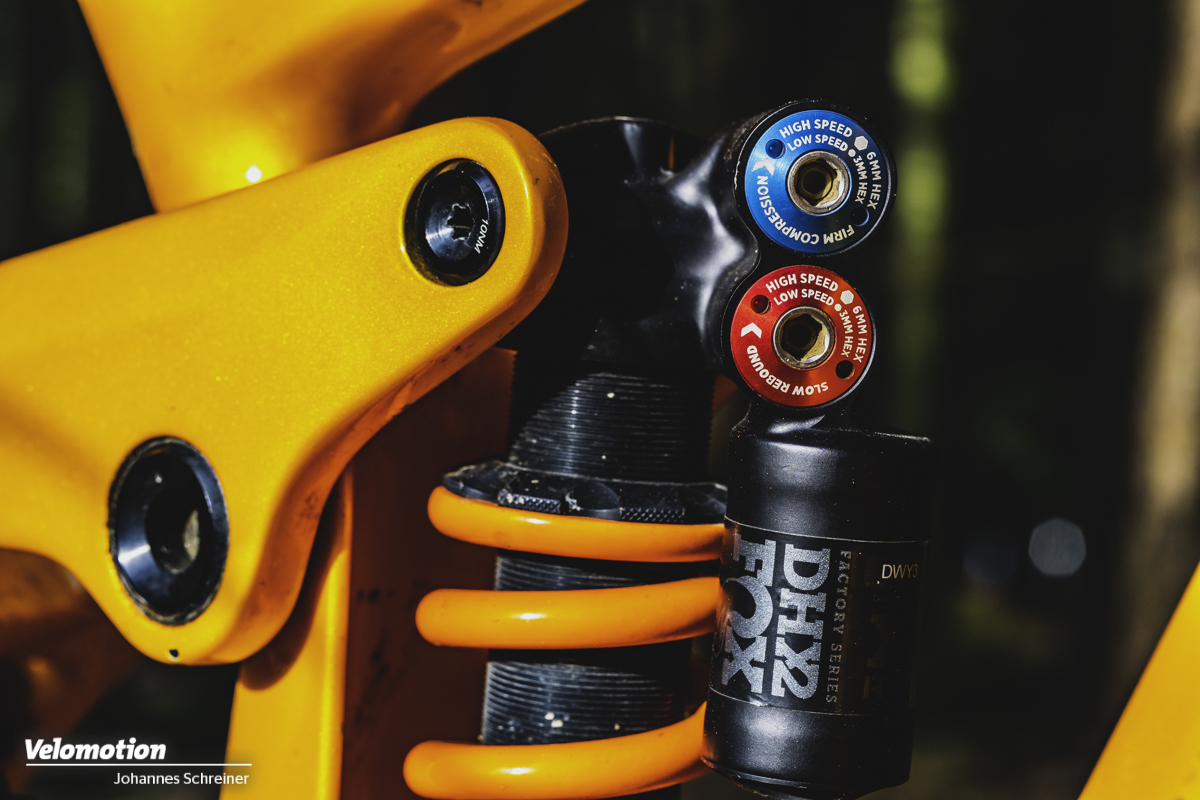
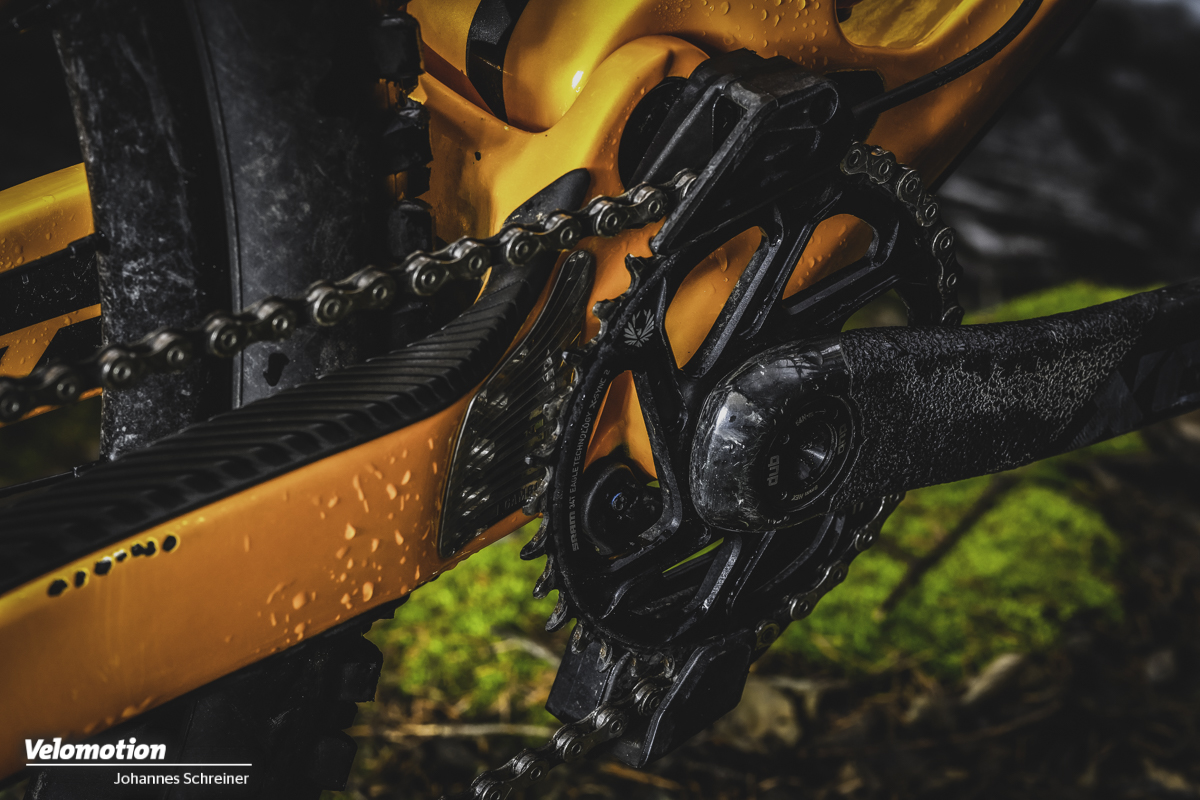
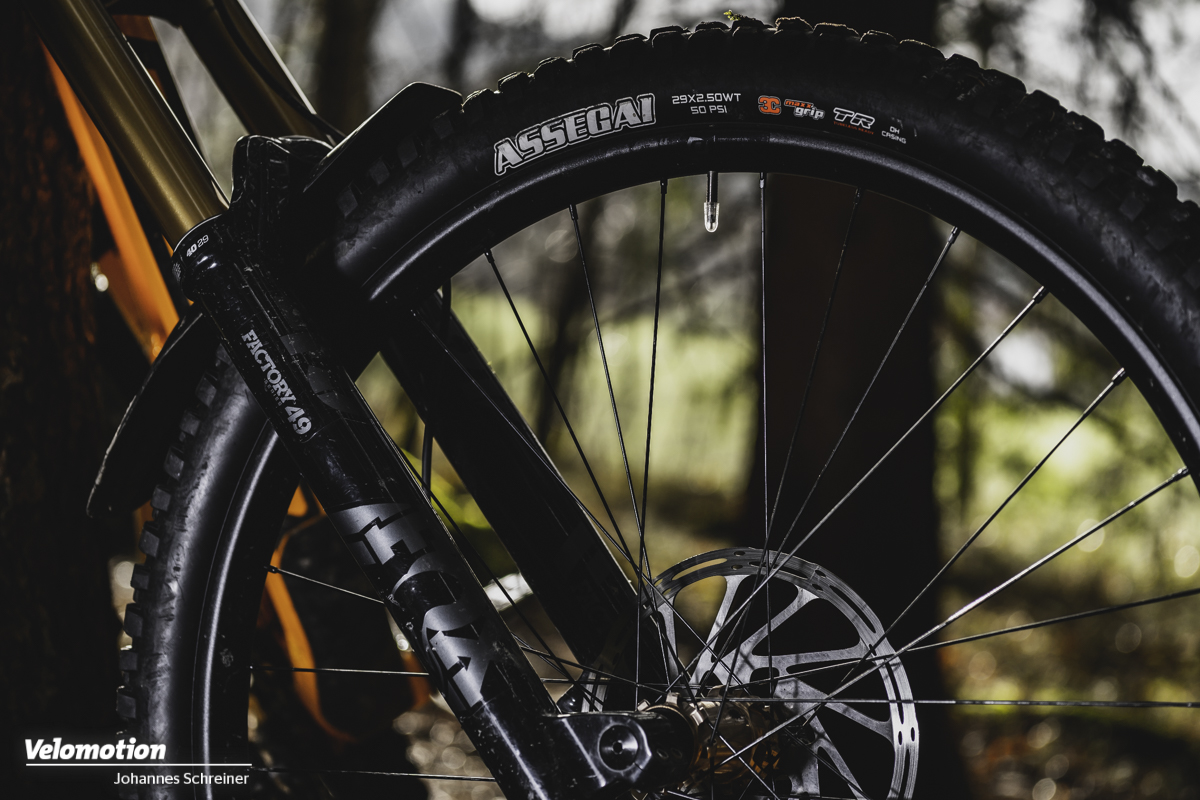
Das Scott Gambler Tuned 900 auf dem Trail
Um das Scott Gambler auch in der Praxis genau unter die Lupe zu nehmen, ging es auf die Downhillstrecke der MTB-Zone Geißkopf und verschiedenste lokale Trails, die dem Bike bei schlechten Bedingungen in den nasskalten Wintermonaten alles abverlangen sollten. Auf dem Testbike in Größe L mit 460,4mm Reach, in der langen Kettenstreben- und tiefen-/linearen Tretlager-Einstellung, fühlte ich mich schnell wohl und hatte bei einer Körpergröße von 1,80m das Gefühl sehr zentral und tief im Bike zu stehen. Dieses Setup war vor allem auf der DH-Strecke in Bischofsmais mein Favorit, da ich so nie das Gefühl hatte zu tief im Federweg zu stehen und der Hinterbau auch in der linearen Einstellung sehr aktiv und „poppig“ wirkte. Auf steileren Strecken bevorzugte ich das progressive Setting in Verbindung mit kurzen Streben für maximale Kontrolle und Traktion.
Hier spielten jedoch natürlich auch persönliche Vorlieben eine Rolle. Vor allem versierte Fahrer mit Hang zur Technik können sich hier mit den verschiedensten Setting-Kombination voll austoben und das Gambler auf jegliche Situationen anpassen. Die verbaute 500 lbs Stahlfeder im DHX2 Federbein wirkte bei ca. 80kg Testfahrergewicht straff, doch mit der passend abgestimmten Fox 49 passend für hartes Gelände und meinen persönlichen Geschmack. Bereits vorweg kann verraten werden, dass das Fahrwerk extrem sensibel arbeitete, kleine Schläge sauber herausfilterte und bei größeren Schlägen die nötigen Reserven bot.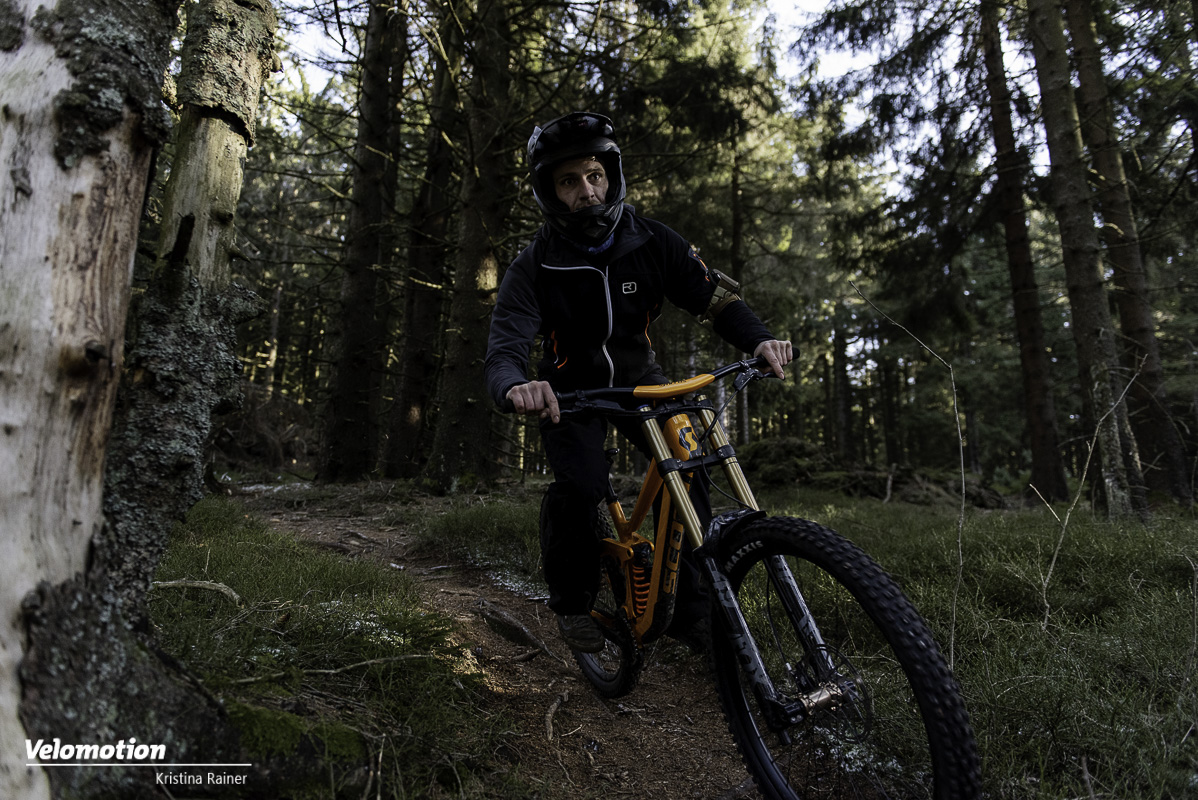
Das geringe Gewicht von 15,7kg machte sich am Gambler Tuned 900 schnell positiv bemerkbar, denn es ließ sich absolut spielerisch über die Tracks steuern und seinen Fahrer beinahe vergessen, dass es auf 29 Zoll Rädern mit 1270mm Radstand läuft. Besonders auf angelegten Bikepark-Strecken machte es sich erstaunlich gut, denn in Anliegern ließ es sich, auch im langen Kettenstreben-Setting, agil und dynamisch durch die Kurven zirkeln. Bim springen über Tables und Gaps ließ sich das Gambler leichter als vermutet quer stellen, lud zu Spielereien ein und verzieh auch schräge Landungen problemlos. Auf großen Jumps mit sehr steilen Absprüngen fühlte ich mich im Test nicht immer zu 100% wohl – hier würde jedoch wohl schon der Aufbau als Mullet-Bike Abhilfe schaffen, wie Scott-Teamfahrer Brendog zuletzt in Südafrika während des Dark Fest´s, auf einigen der größten Sprüngen der Welt, eindrucksvoll bewies. Hier sollte man jedoch auch erwähnen, dass das Gambler Tuned vor allem mit 29 Zoll Laufrädern grundsätzlich ein klassisches Racebike darstellt und weniger ein Parkbike, doch durch die verschiedenen Setting-Optionen und die freie Wahl der Laufräder kann bei Bedarf gehörig am Charakter des Gamblers gefeilt werden.
In gröberem Gelände lief das Gambler genau so, wie man es von einem modernen 29 Zoll Downhill-Racebike erwartet. Es strahlte viel Laufruhe aus und ließ sich zudem absolut präzise steuern. Durch ruppige Passagen ließ sich viel Speed generieren, denn die 29er Alu-Laufräder rollten über (fast) alles problemlos hinweg und sorgten gefühlt für etwas mehr Komfort, da Rahmen und Cockpit in Kombination doch recht steif wirkten. Besonders für weniger geübte Fahrer empfiehlt sich an diesem Bike statt der Syncros Lenker-Vorbau-Kombination ein konventionelles Cockpit aus Aluminium, das weniger Steifigkeit aufweist. Persönlich hatte ich im Test zwar wenig Probleme, doch musste an ausgewaschenen Stellen und bei Bremswellen der Lenker gut festgehalten werden, dies kann vor allem auf längeren Strecken für mächtig Armpump sorgen.
In Steinfeldern marschierte das neue Gambler in toller 29er-Manier und wusste besonders durch Effektivität zu begeistern, da es auch bei der falschen Linienwahl zielstrebig in Richtung Tal ging. Was besonders gefiel war, dass das Bike absolut leise, ja schon fast geräuschlos fährt, was im Test unter anderem durch die leise Syncros Nabe und die interne Zugführung begünstigt wurde. Auf natürlichen Trails, die etwas enger
Das Gambler Tuned 900 wusste im Test zu überzeugen und zeigte all das auf ,was für ein modernes Downhill-Racebike nötig ist. Die Ausstattung wirkte sehr durchdacht und ließ kaum Wünsche offen, denn neben des exzellent arbeitenden Fahrwerks gab es auch sonst an der Wahl der Komponenten nur wenig zu meckern – leider war der Testzeitraum zu kurz um ein abschließendes Fazit, in Hinsicht auf die Haltbarkeit der Anbauteile und des Rahmens zu geben. Bis auf eine kleine Delle am vorderen Laufrad, einige kleinere Lackabplatzer an den Kettenstreben und dem Tretlager kam es im Test zu keinerlei Defekten.

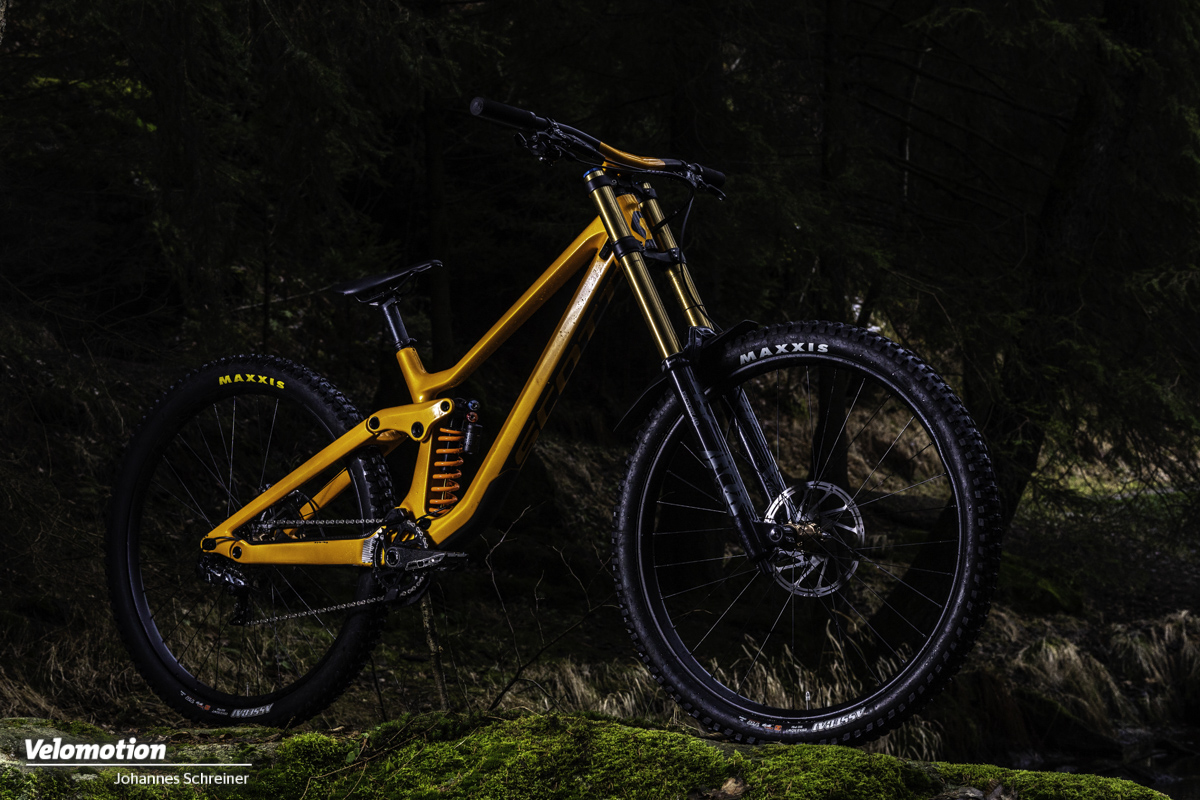
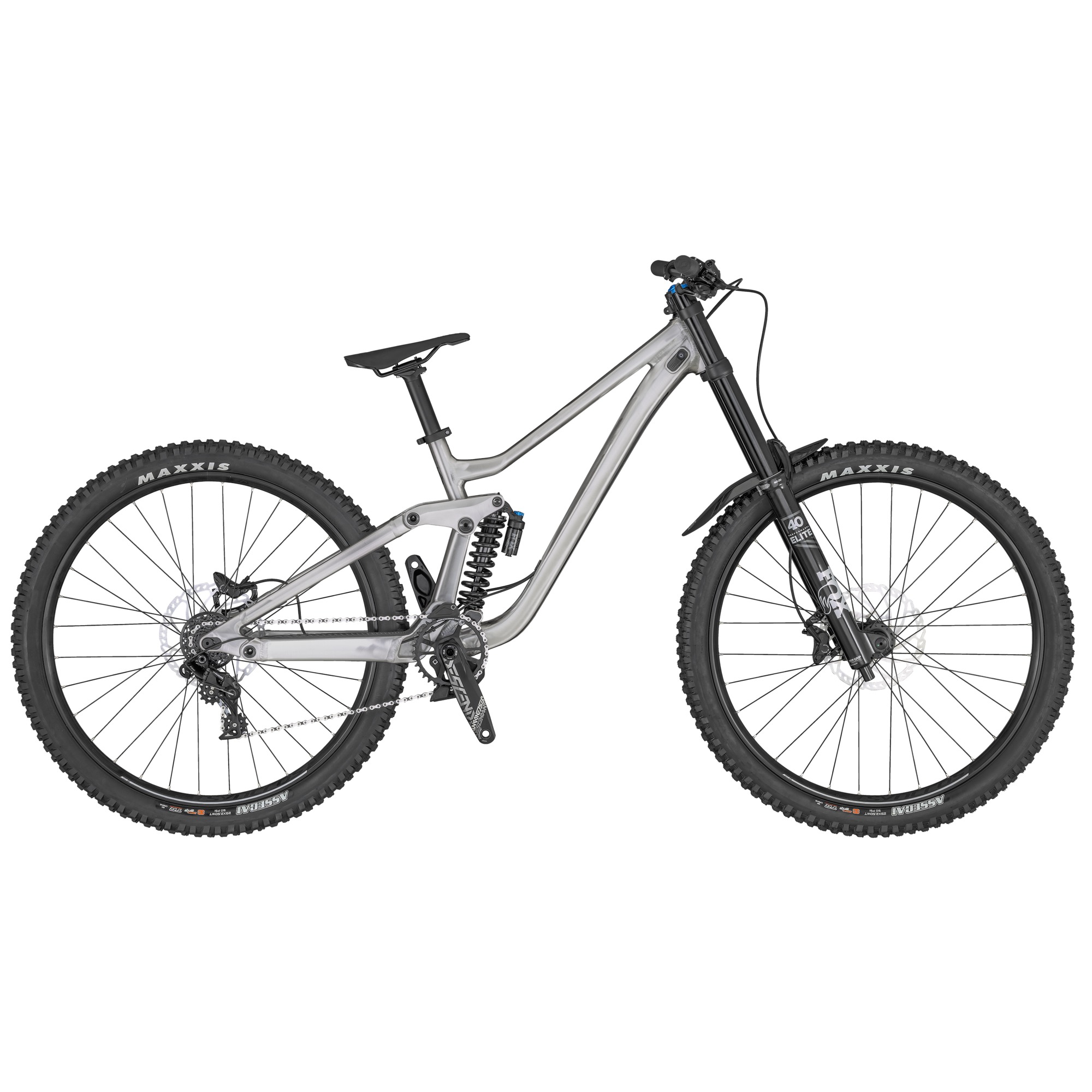
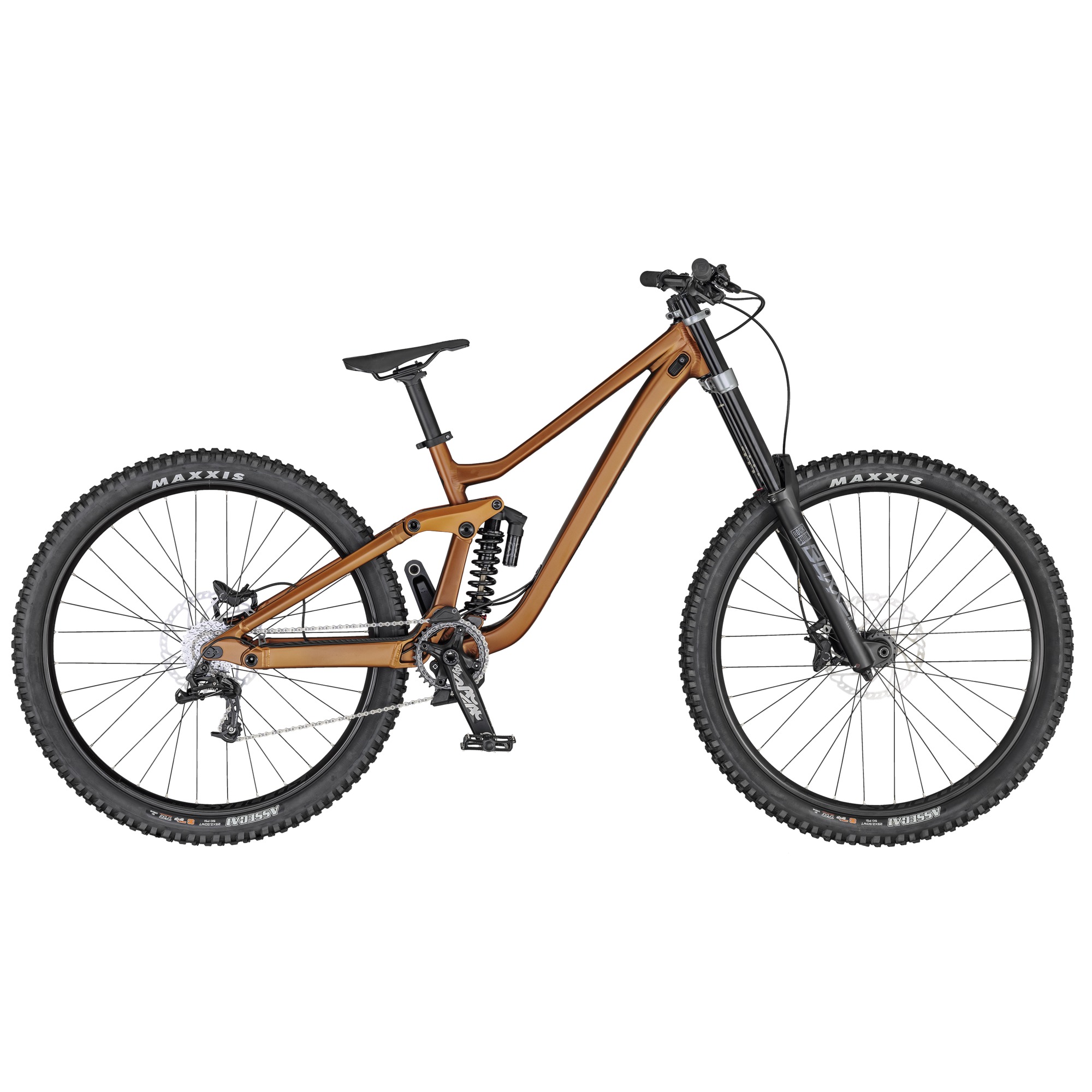
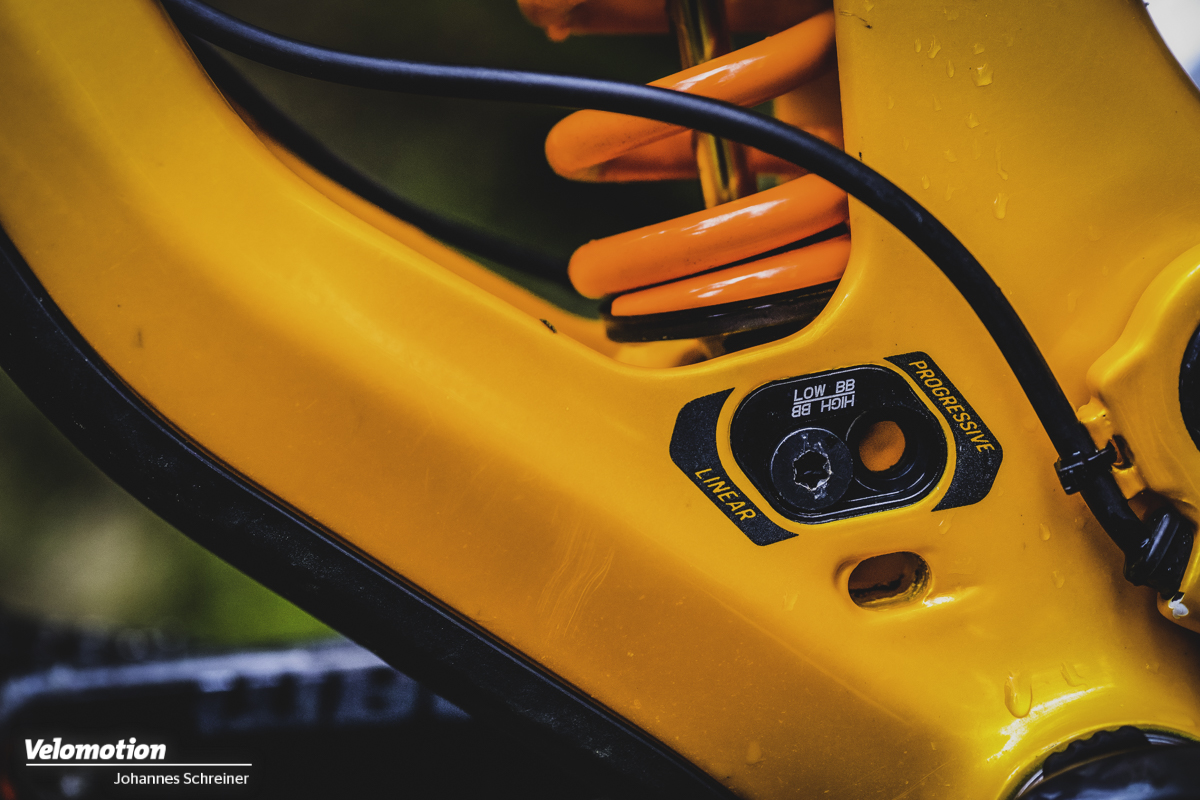
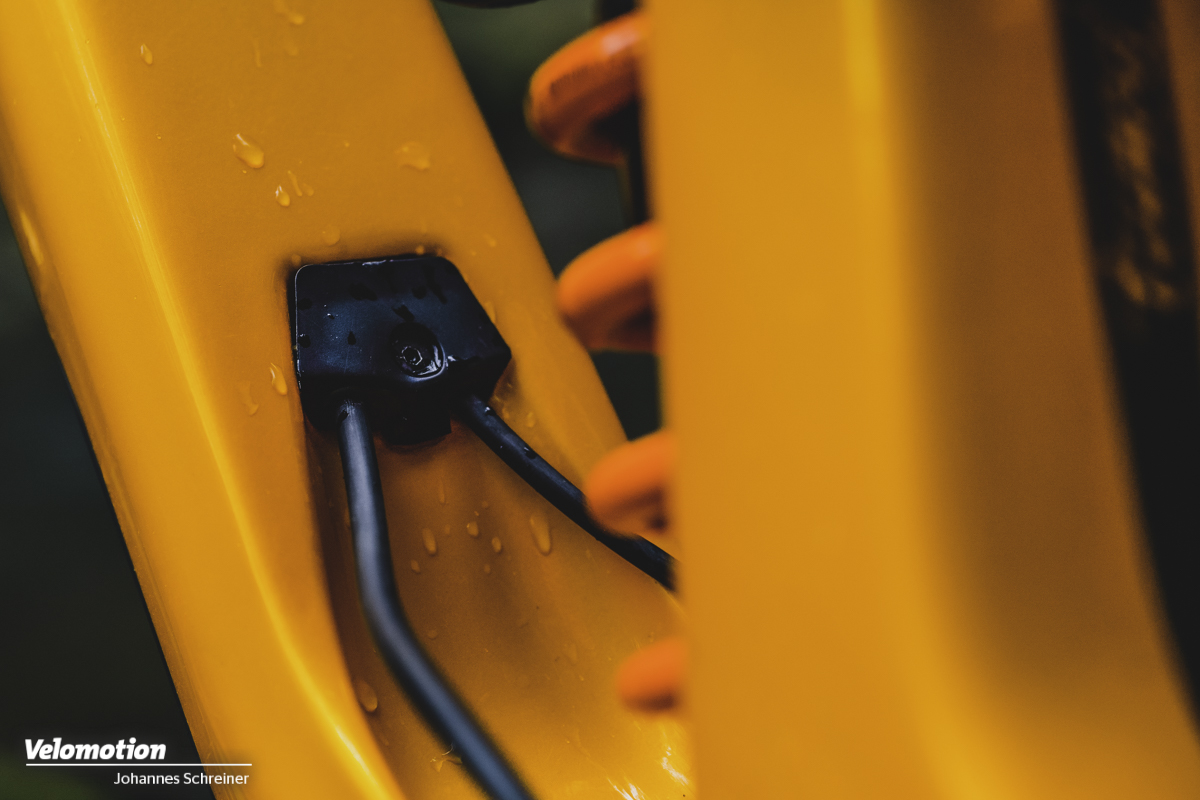
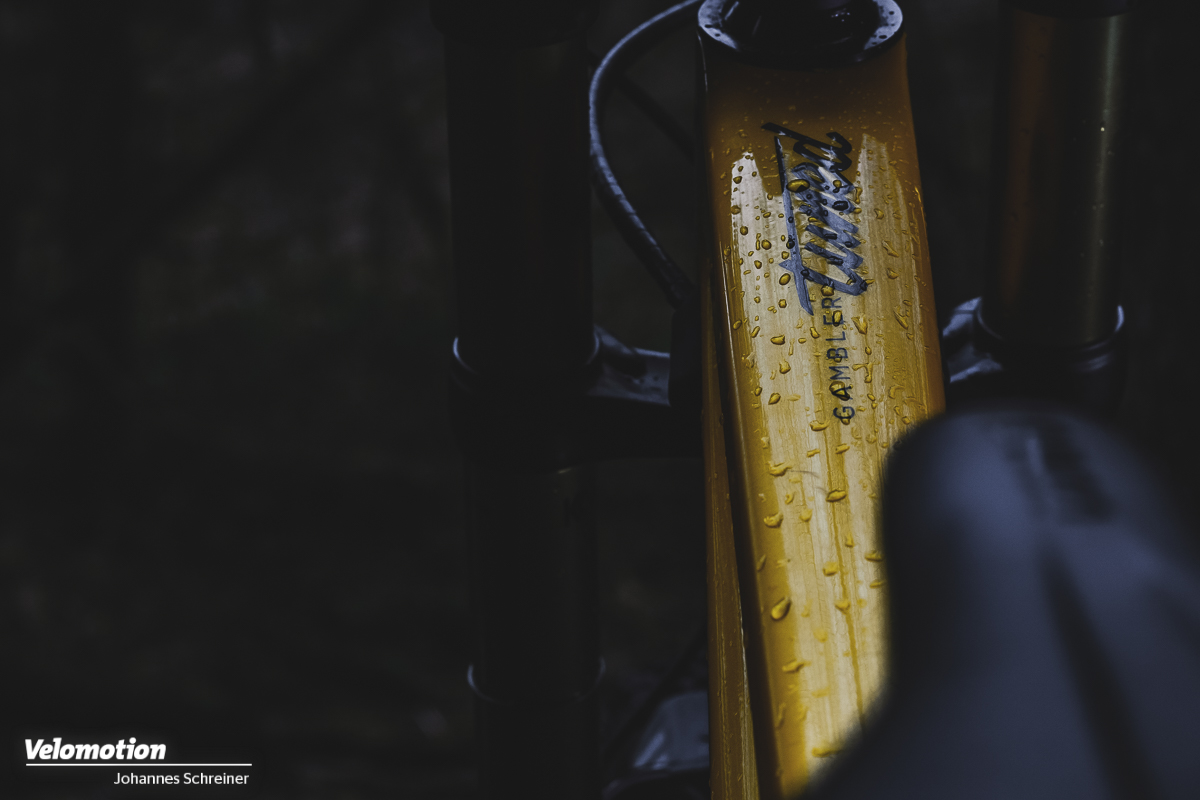
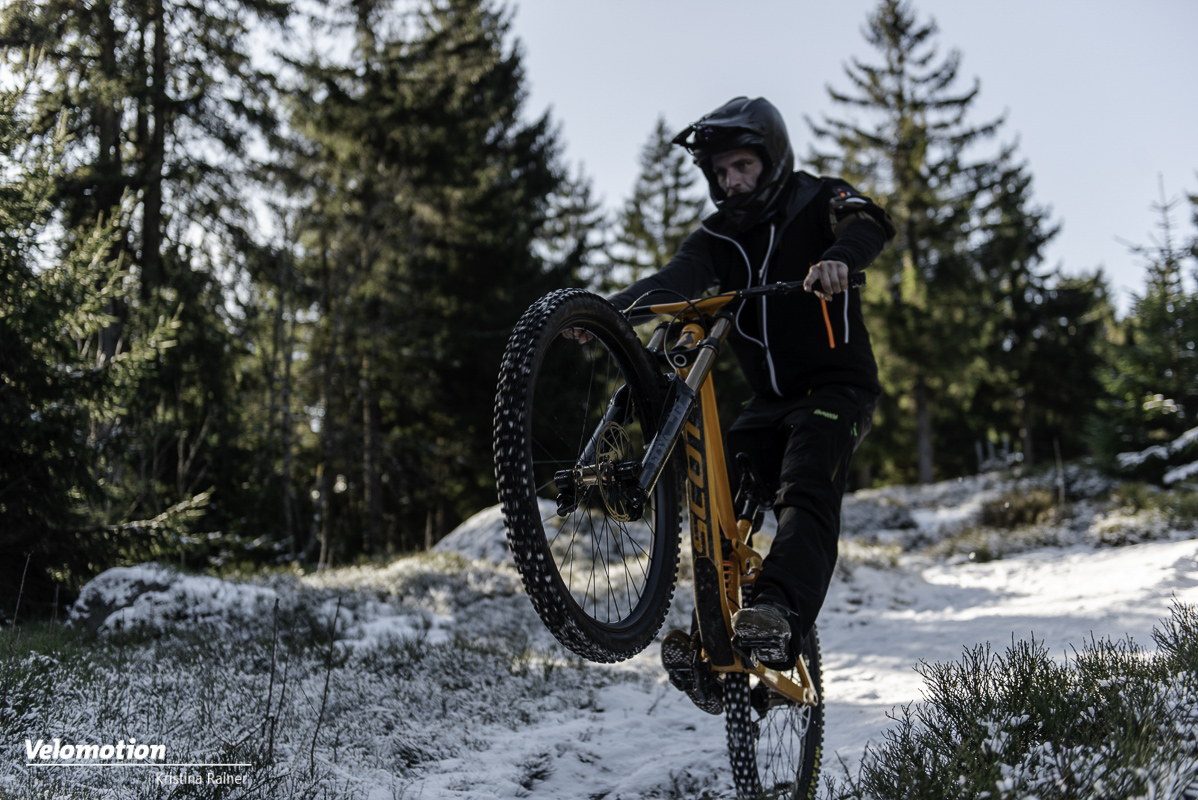
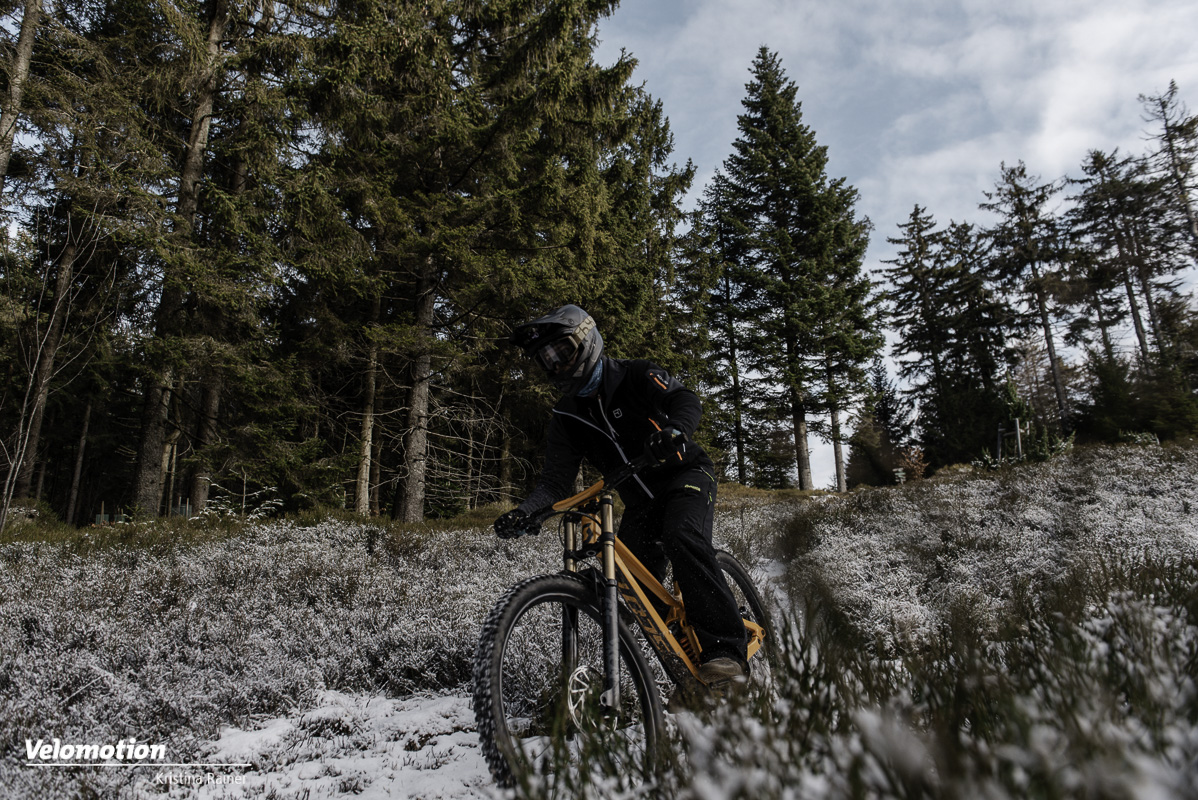
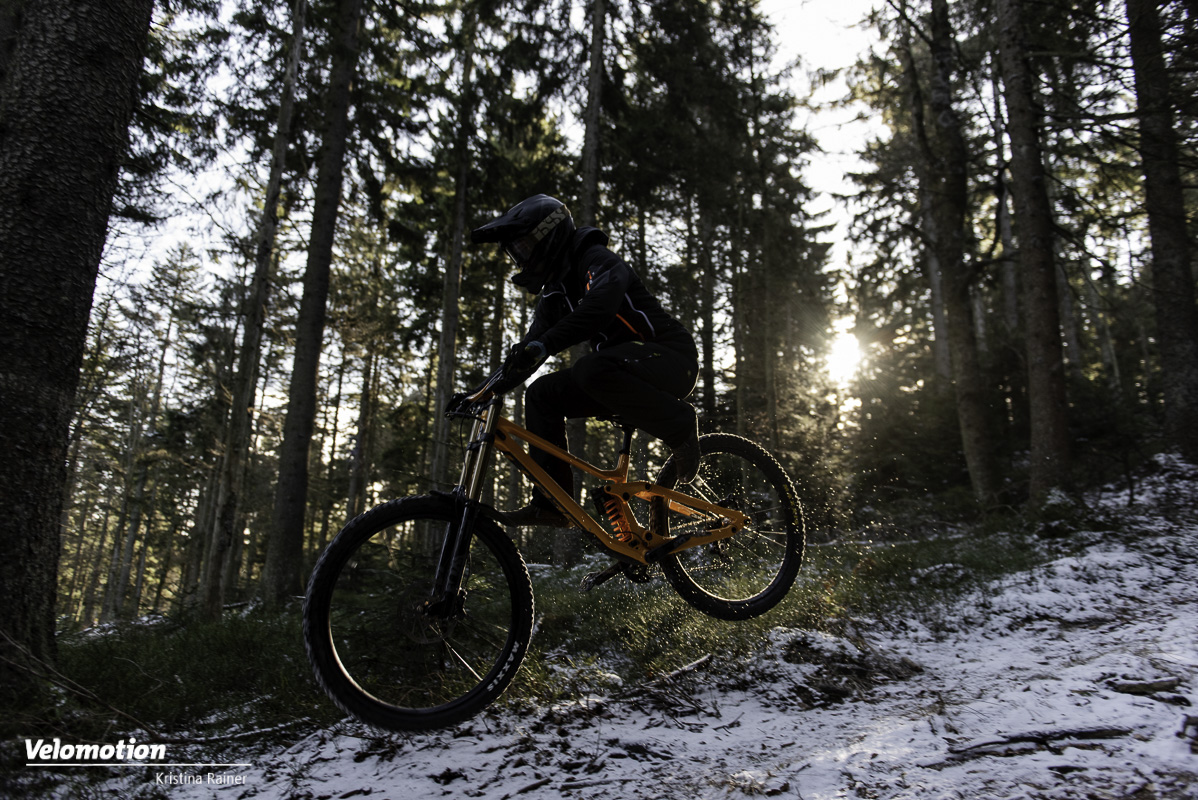
Schreibe einen Kommentar